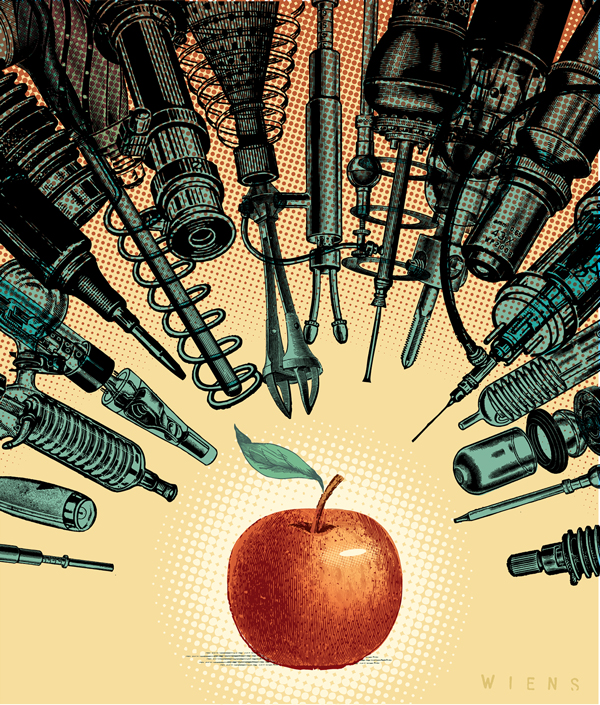Spot Lights
 Monday, June 16, 2014 at 12:12AM | Published in
Monday, June 16, 2014 at 12:12AM | Published in  Assignment work,
Assignment work,  Carl Wiens Illustration | Comments Off
Carl Wiens Illustration | Comments Off 'Some painters transform the sun into a yellow spot, others transform a yellow spot into the sun.'
- Pablo Picasso
I might be setting my sights high quoting Picasso as an opener, but I think the message holds true for illustration. Spot illustrations might not be something to feature, but they are an opportunity to show what you can do. You are limited by space or time, or both, so make the best of it. I always enjoy working on spots, and you have to bring your best to make them shine.
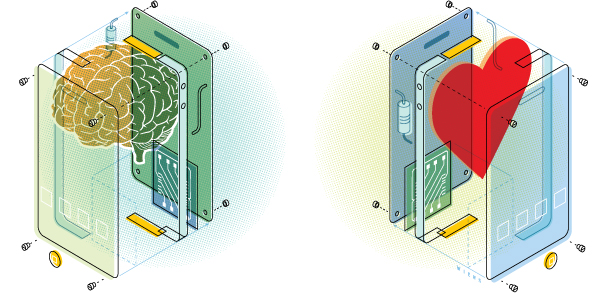
I taught my illustration students about isometric perspective in illustration and that may have influenced this pair of spots for Scientific American about artificial intelligence as well as potential emotional interaction in software and smartphones. The concept was explored in the film 'Her'. and the article explored the plausibility of engaging in a relationship with technology. I worked with art director Bernard Lee on this pair.
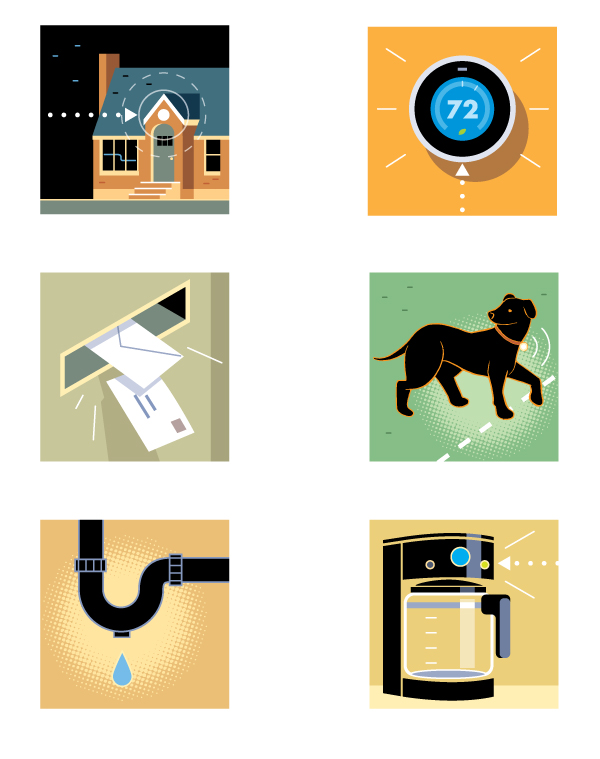 This was a quick turnaround assignment for Pete Hausler at the Wall Street Journal, about smartphone apps that allow the user to remotely control his/her home, adjusting temperature, unlocking doors, playing music or being alerted to incoming mail, leaking pipes or a pet wandering off the property. I passed this assignment to my illustration students to see what they came up with. Working on this, I wanted a simple colour scheme and designed them in illustrator to maintain clean lines.
This was a quick turnaround assignment for Pete Hausler at the Wall Street Journal, about smartphone apps that allow the user to remotely control his/her home, adjusting temperature, unlocking doors, playing music or being alerted to incoming mail, leaking pipes or a pet wandering off the property. I passed this assignment to my illustration students to see what they came up with. Working on this, I wanted a simple colour scheme and designed them in illustrator to maintain clean lines.
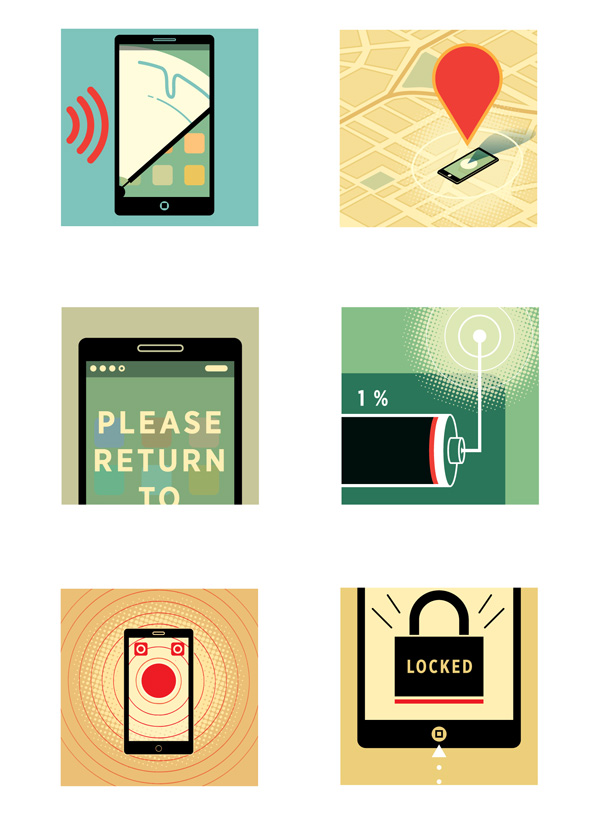
Here's another set, in the same style for the tech section of WSJ. This one was about apps to help locate or disable a lost or stolen phone. Security and saftey features including location, alarm, notifications and a remote 'wipe' if need be (top left).

I do a monthy feature for UpHere magazine, a business magazine out of Yellowknife, Northwest Territories. Most of these images are resource-based. So clockwise from top left - oil glut and future oil prices; energy access and mining development; wind-based power; raising pot in former mines.
I'll leave with this image. It's not a spot, but it's a reflection of where I am at right now. I am packing up my studio and getting ready to move. I am organizing a road trip to Oregon for ICON8. Really looking forward to it, making big changes & moves. I did this for the Work & Play show, organized by ICON. It's about maintaining the right balance, something I am always involved in, feeling like I am winning or losing the battle.
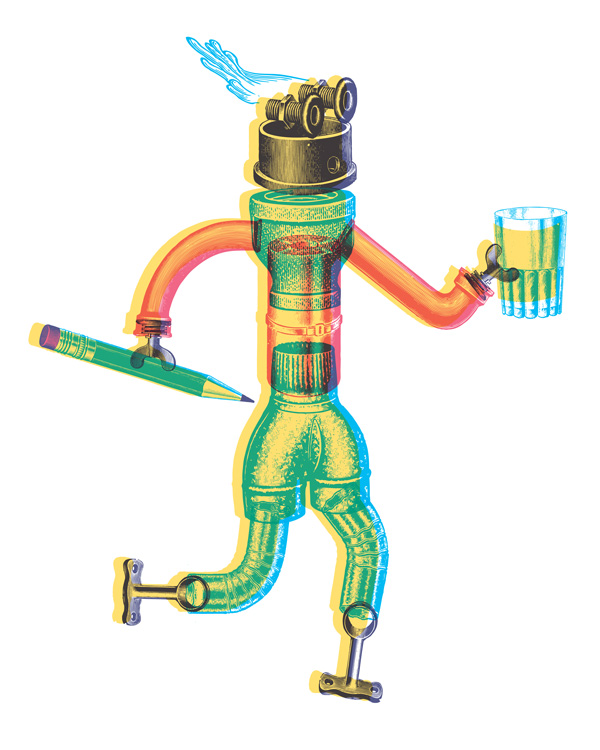
 Illustration,
Illustration,  Science,
Science,  Scientific American,
Scientific American,  Spot,
Spot,  WSJ,
WSJ,  tech
tech 



